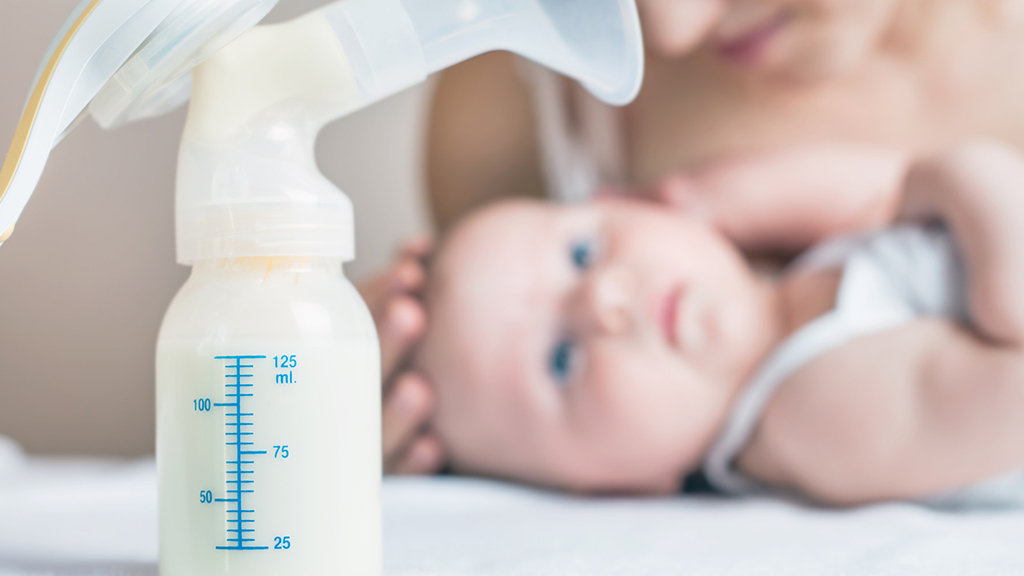NHS Start 4 Life has two helpful videos you can watch on how to hand express breast milk/ colostrum.
- To collect your colostrum, you will need a clean, sterilized syringe and a clean, sterilized larger container. Have these items ready before you start.
- Make yourself comfortable and try to relax. Warmth will help, so try expressing in the shower or bath at first. You can gently massage your breasts with a warm flannel.
- Use your hand to cup one of your breasts. Your hand should be in a ‘C’ shape around the nipple with four fingers under the breast and the thumb at the top. Your thumb and fingers should be about 2-3cm away from the base area around the nipple.
- Use your thumb and index finger to gently squeeze. Release the pressure and then repeat to create a rhythm. This shouldn’t hurt. Avoid sliding your fingers over your skin as this may cause discomfort. If the colostrum doesn’tflow, try moving your fingers slightly towards the nipple or further away,finding the spot that works best for you. You could also try gently massaging your breast.
- Collect your colostrum with the sterilised syringe and if necessary decant to the larger sterilised container. Colostrum is very concentrated and will come out of your breast drop by drop. At first, only a few drops will come out at each session, but with practice and time, you should get more.
- When the drops slow down, move your fingers round to try a different section of your breast and repeat.
- Repeat the process for your second breast.
Picture of hand expressing

Note the C Shape and the distance of the fingers from the nipple. The breast is squeezed but the fingers do not move position.
The amount of colostrum you collect when you express can vary from just a few drops to a teaspoon full. Every drop counts, so don’t lose heart if you feel you haven’t collected much colostrum. This doesn’t mean your baby will find it difficult to breastfeed.
It is very rare for colostrum harvesting to cause the onset of labour. You may feel your womb tightening and relaxing. This is called a Braxton Hicks contraction and isn’t a cause for concern. If you begin to feel ‘period-like’ cramps or mild labour contractions, stop expressing, rest and then start again slowly.
Storing your colostrum
- Label the syringe or container with your name and the date and time you expressed the colostrum.
- Put the syringe or container in a clean re-sealable bag and place it in your freezer at a temperature of -18°C.
- You can store your milk in the back of the fridge at a temperature of 2-4°C for up to 24 hours before you freeze it.
- Fresh breast milk that has only been stored in the fridge must be used within five days.
- Breast milk that has been frozen can be defrosted in the fridge. It must be used within 24 hours.
You can express and freeze your colostrum at home and bring it into hospital when you have your baby.
To bring your colostrum into hospital you will need:
• re-sealable food bags
• a small cool bag
• two large ice blocks
When you go into hospital to have your baby, put a few of your (labelled) frozen syringes into a re-sealable food bag. Place this inside the cool bag between the two ice blocks.
Tell your midwife that you have colostrum with you when you arrive. It will be labelled with the date and time it was removed from your freezer and stored in the hospital fridge or freezer. This will be documented in your notes.
If you are in hospital during the later weeks of your pregnancy, discuss colostrum collection with your midwife. You will be given syringes so that you can harvest your colostrum and store it in the hospital freezer.





